- Choosing the Right Bell Pepper Seeds
- Proper Soil Preparation for Bell Peppers
- Soil Requirements
- Steps for Soil Preparation
- Soil Maintenance
- Sowing and Germinating Bell Pepper Seeds
- Transplanting Bell Pepper Seedlings
- Preparation
- Transplanting Process
- Aftercare
- Bell Pepper Plant Care and Maintenance
- 1. Watering
- 2. Fertilizing
- 3. Pruning
- 4. Staking or Support
- 5. Pest and Disease Control
- 6. Weed Control
- 7. Harvesting
- Protecting Bell Pepper Plants from Pests and Diseases
- 1. Identify and monitor common pests
- 2. Practice good garden hygiene
- 3. Use natural pest control methods
- 4. Rotate crops
- 5. Monitor and treat diseases
- 6. Provide proper spacing
- Harvesting and Preparing Bell Pepper Fruits
- “Question-Answer”
- When is the best time to sow bell pepper seedlings?
- Can I sow bell pepper seeds directly in the garden?
- How should I sow bell pepper seeds indoors?
- What temperature should I maintain for bell pepper seedlings?
- How often should I water bell pepper seedlings?
- What are some common pests and diseases that affect bell pepper plants?
- “Video” TIPS PARA MAGING HITIK SA BUNGA ANG BELL PEPPER
Bell peppers, also known as sweet peppers, are popular vegetable crops that are easy to grow and provide a delicious addition to many meals. Whether you have a small garden or just a few pots on your balcony, you can enjoy the satisfaction of growing your own bell peppers from sowing the seedlings to preparing the fruits for your favorite recipes. This article provides essential tips for successfully growing bell peppers, from the early stages of seed sowing to the final harvest.
To start growing bell peppers, it is best to begin with healthy seedlings. You can either purchase seedlings from a nursery or start your own from seeds. If starting from seeds, it is recommended to begin sowing indoors 8-10 weeks before the last frost. Use a well-draining soil mix and place the seeds about 1/4 inch deep. Keep the soil consistently moist and provide ample lighting to ensure proper germination.
Once your seedlings have sprouted and have at least two sets of true leaves, they are ready to be transplanted into larger containers or directly into the ground. Bell peppers prefer a sunny location with well-drained soil. Prepare the planting area by incorporating organic matter, such as compost or aged manure, to improve soil fertility. Plant the seedlings at least 18 inches apart to allow for adequate air circulation and growth.
Proper care is essential for the successful growth of bell peppers. Water the plants regularly, aiming to keep the soil evenly moist but not waterlogged. Avoid overhead watering, as wet foliage can invite disease. Apply a balanced fertilizer, rich in nitrogen, phosphorus, and potassium, every 4-6 weeks to promote healthy growth and fruit development.
As the bell pepper plants grow, they may require support. Consider placing stakes or cages around the plants to prevent them from toppling over due to the weight of the fruits. Pinch off any flowers that form in the first few weeks to encourage the plants to focus on vegetative growth. Once the plants reach a desirable height, allow flowers to develop, as they will eventually produce the peppers.
When the bell peppers reach their mature size and color, it’s time to harvest! Use a sharp knife or scissors to cut the peppers from the plant, avoiding pulling or twisting, which can damage the plant. Harvesting regularly encourages the growth of new fruits. Bell peppers can be enjoyed fresh, roasted, or incorporated into a variety of dishes, adding vibrant flavors and nutritional value to your meals.
With proper care and attention, growing bell peppers can be a rewarding and delicious experience. Whether you are a novice or experienced gardener, following these care tips will help you cultivate healthy plants that yield abundant bell peppers for you to enjoy.
Choosing the Right Bell Pepper Seeds
When it comes to growing bell peppers, choosing the right seeds is essential for a successful harvest. Here are some factors to consider when selecting bell pepper seeds:
- Variety: Bell peppers come in various colors and sizes, each with its own unique flavor profile. Choose a variety that suits your taste preferences and culinary needs. Common varieties include green, red, yellow, and orange bell peppers.
- Growing Conditions: Different bell pepper varieties have specific requirements for sunlight, temperature, and soil conditions. Consider the climate and environment in which you plan to grow the peppers and select seeds that are known to thrive in those conditions.
- Seed Source: It is important to choose seeds from a reliable and reputable source. This ensures that you are getting high-quality seeds that are true to the variety. Look for a company or supplier with good customer reviews and a history of producing viable seeds.
- Seedling vs. Regular Seeds: Bell pepper seeds can be purchased as either seedlings or regular seeds. Seedlings are young plants that have already started to grow, while regular seeds need to be planted and germinated. Consider your level of experience and the time you have available for gardening when deciding which type of seeds to choose.
Once you have selected the right bell pepper seeds, it’s time to start sowing and growing! Follow the proper care tips to ensure successful germination and growth of your bell pepper plants.
Please note that the availability of certain bell pepper seed varieties may vary depending on your location and the time of year. It is always a good idea to check with local gardening centers or seed catalogs for the best options available to you.
Proper Soil Preparation for Bell Peppers
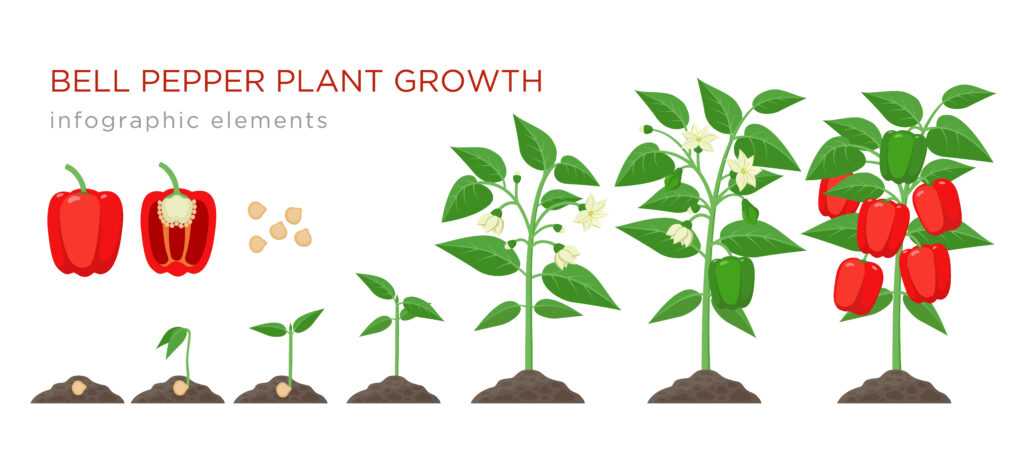
Soil Requirements
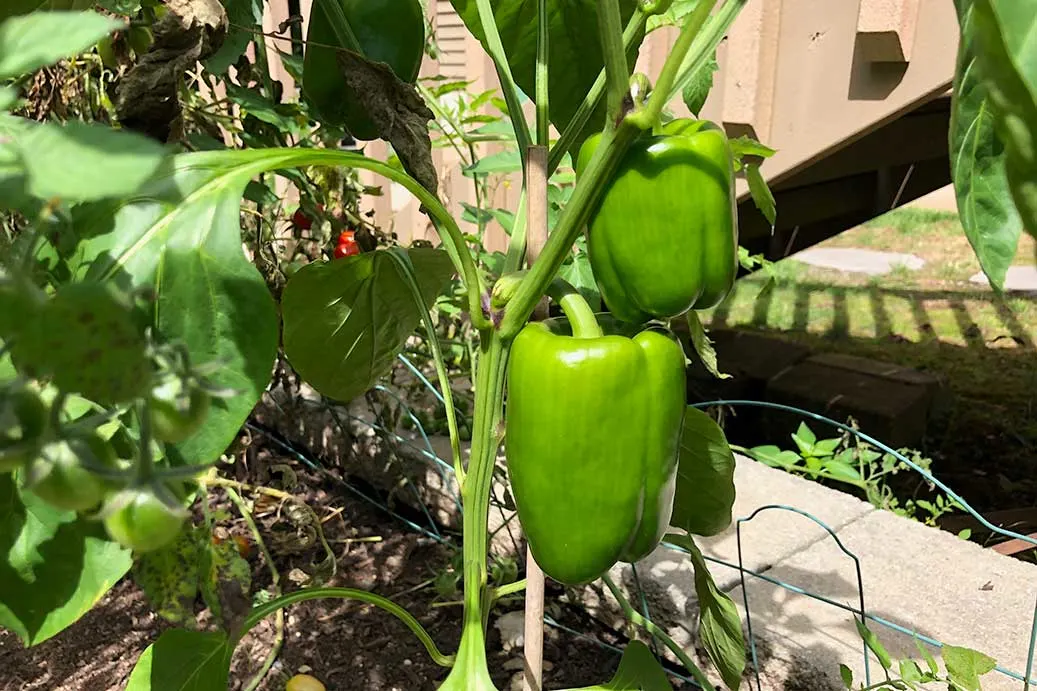
Proper soil preparation is crucial for growing healthy bell peppers. Bell peppers require well-draining soil that is rich in organic matter. The soil should have a pH level between 6.2 and 7.0, which is slightly acidic to neutral.
Steps for Soil Preparation
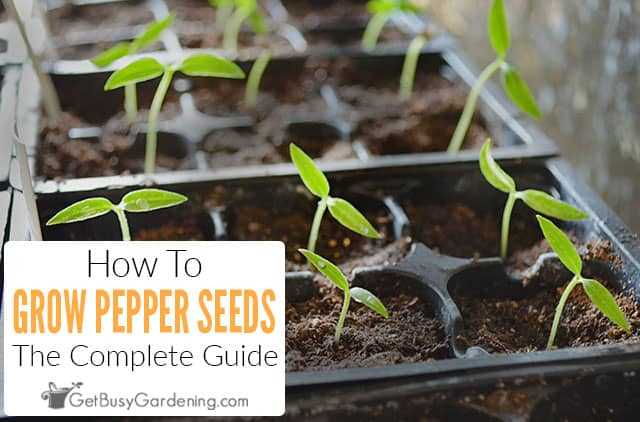
- Clear the area: Start by removing any weeds or vegetation from the area where you plan to grow bell peppers. This will help reduce competition for nutrients and space.
- Loosen the soil: Use a garden fork or tiller to loosen the soil to a depth of at least 12 inches. This will improve drainage and allow the roots to penetrate easily.
- Amend the soil: Add well-rotted compost or aged manure to the soil. This will enrich the soil with organic matter and provide essential nutrients for the bell peppers.
- Test the pH: Use a soil testing kit to determine the pH level of the soil. If the pH is below 6.2, you can add lime to raise the pH. If the pH is above 7.0, you can add sulfur to lower the pH.
- Mix in fertilizer: Before planting the bell pepper seedlings, mix in a slow-release fertilizer according to the manufacturer’s instructions. This will provide a steady supply of nutrients throughout the growing season.
- Level the soil: Use a rake to level the soil surface. This will ensure even moisture distribution and make it easier to plant the bell pepper seedlings.
Soil Maintenance
After planting the bell pepper seedlings, it’s important to maintain the soil to ensure optimal growth and fruiting. Here are some tips for soil maintenance:
- Watering: Keep the soil consistently moist but not waterlogged. Water deeply and infrequently to encourage deep root growth.
- Mulching: Apply a layer of organic mulch around the bell pepper plants to help conserve moisture, suppress weed growth, and regulate soil temperature.
- Weeding: Regularly remove weeds that compete with the bell pepper plants for nutrients and space. Be careful not to disturb the shallow roots of the plants.
- Feeding: Apply a balanced fertilizer every two to three weeks during the growing season to provide the bell pepper plants with a continuous supply of nutrients.
By properly preparing the soil and maintaining it throughout the season, you can ensure healthy growth and a bountiful harvest of bell peppers.
Sowing and Germinating Bell Pepper Seeds
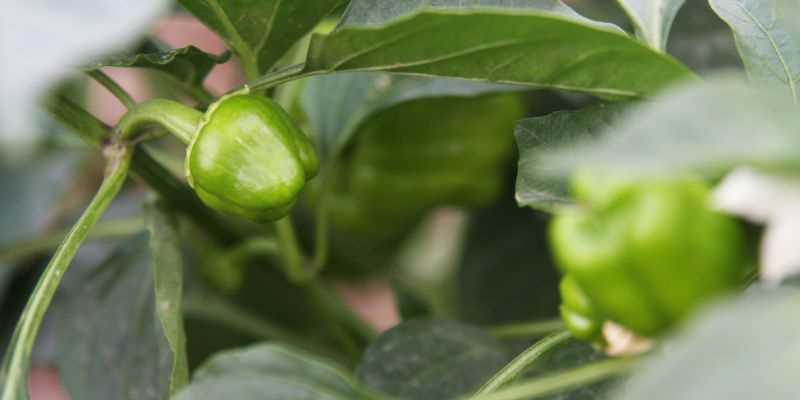
Bell peppers are a popular vegetable to grow in home gardens. They are relatively easy to grow from seed, making it a great option for beginners. Here are the steps to sow and germinate bell pepper seeds:
- Choose a high-quality bell pepper seed variety that suits your growing conditions. Read the seed packet for specific information on the variety and its requirements.
- Fill a seed tray or small pots with a well-draining seed-starting mix. Moisten the soil lightly before sowing the seeds.
- Sow the bell pepper seeds about ¼ inch deep and space them about 2 inches apart. Cover the seeds with a thin layer of soil and lightly press them down.
- Place a clear plastic cover over the seed tray or pots to create a greenhouse-like environment. This helps to maintain humidity and moisture levels for successful germination.
- Put the seed tray or pots in a warm location with indirect sunlight. The ideal temperature range for bell pepper seeds to germinate is between 75°F and 85°F (24°C to 29°C).
- Check the moisture level of the soil regularly and water as needed to keep it consistently moist, but not soggy.
- After about 7 to 10 days, you should start to see the bell pepper seeds sprout. Once the seedlings have emerged, remove the plastic cover.
- Continue to provide the seedlings with bright, indirect sunlight. If necessary, use grow lights to supplement natural light.
- When the seedlings have developed their first set of true leaves, it is time to transplant them into larger pots or into the garden. Handle the seedlings carefully to avoid damaging their delicate roots.
By following these steps, you can successfully sow and germinate bell pepper seeds. Soon, you’ll have healthy seedlings ready to grow into productive bell pepper plants in your garden.
Transplanting Bell Pepper Seedlings
Transplanting bell pepper seedlings is an important step in the growing process, as it allows the plants to continue their growth in a more spacious and favorable environment. Here are some tips to ensure a successful transplant:
Preparation
- Choose a sunny location in your garden with well-draining soil.
- Prepare the soil by adding compost or organic matter to improve its fertility and drainage.
- Water the soil thoroughly a day before transplanting to ensure it is moist.
- Make sure you have enough space between each seedling to allow for proper growth and air circulation.
Transplanting Process
- Gently remove the bell pepper seedlings from their containers or seed trays, being careful not to damage the roots.
- Dig a hole in the garden bed that is slightly larger than the root ball of the seedling.
- Place the seedling in the hole, ensuring that the top of the root ball is level with the soil surface.
- Fill the hole with soil, gently pressing it down to secure the seedling in place.
- Water the transplanted seedlings thoroughly to settle the soil around the roots.
Aftercare
After transplanting, it is important to provide proper care to ensure the successful establishment of the seedlings:
- Water the seedlings regularly, keeping the soil consistently moist but not waterlogged.
- Apply a layer of mulch around the plants to conserve moisture and suppress weed growth.
- Monitor the seedlings for any signs of pests or diseases and take appropriate action if needed.
- Provide support, such as stakes or cages, as the plants grow taller to prevent them from toppling over.
- Fertilize the seedlings with a balanced fertilizer according to the manufacturer’s instructions.
By following these tips, you can successfully transplant your bell pepper seedlings and set them up for healthy growth and productivity.
Bell Pepper Plant Care and Maintenance
1. Watering
Proper watering is essential for the growth and health of bell pepper plants. Water the plants deeply and thoroughly, ensuring that the soil is evenly moist. Avoid over-watering, which can lead to root rot and other fungal diseases. It’s best to water the plants in the early morning or late evening to minimize evaporation.
2. Fertilizing
Bell pepper plants benefit from regular fertilization to provide them with the necessary nutrients for optimal growth. Use a balanced fertilizer, such as a 10-10-10 formula, and apply it according to the package instructions. Avoid over-fertilizing, as this can lead to excessive foliage growth and reduce fruit production.
3. Pruning
Pruning bell pepper plants helps promote better air circulation and allows more light to reach the developing fruits. Remove any suckers or side shoots that appear in the leaf axils. Pinch off the top of the plant when it reaches the desired height to encourage branching and more fruit production.
4. Staking or Support
Due to the weight of the fruit, bell pepper plants may require support to prevent them from falling over or breaking. Use stakes or cages to provide support for the plants. Place the stakes or cages into the ground early in the growing season to avoid damaging the roots later on.
5. Pest and Disease Control
Monitor your bell pepper plants regularly for any signs of pests or diseases. Common pests that affect bell peppers include aphids, caterpillars, and thrips. Use organic pest control methods, such as neem oil or insecticidal soap, to manage infestations. Additionally, practice good hygiene and remove any diseased plants or affected leaves to prevent the spread of diseases.
6. Weed Control
Keep the area around your bell pepper plants free from weeds, as they can compete with the plants for nutrients and water. Use mulch to suppress weed growth and protect the soil’s moisture. Regularly remove any weeds that may still appear to maintain a clean and weed-free growing environment.
7. Harvesting
Harvest bell peppers when they reach the desired size and color. Gently twist or cut the peppers from the plant to avoid damaging the branches. Harvesting regularly promotes continuous fruit production. Store the harvested peppers in a cool, dry place or use them in recipes immediately.
| Aspect | Requirement |
|---|---|
| Watering | Even moisture, avoiding over-watering |
| Fertilizing | Regular application of balanced fertilizer |
| Pruning | Remove suckers and pinch off the top of the plant |
| Support | Stake or cage plants to prevent breakage |
| Pest and Disease Control | Monitor regularly and use organic pest control methods |
| Weed Control | Maintain a weed-free growing environment using mulch |
| Harvesting | Twist or cut peppers from the plant when ready |
Protecting Bell Pepper Plants from Pests and Diseases
One of the biggest challenges when growing bell peppers is dealing with pests and diseases that can damage or kill your plants. Here are some tips on how to protect your bell pepper plants:
1. Identify and monitor common pests
- Inspect your bell pepper plants regularly to identify any signs of pests.
- Common pests that affect bell peppers include aphids, spider mites, and whiteflies.
- Look for yellowing or wilting leaves, distorted growth, or the presence of small insects.
2. Practice good garden hygiene
- Keep the garden clean and free from weeds, as they can harbor pests and diseases.
- Remove any fallen leaves or plant debris to reduce the chances of diseases spreading.
3. Use natural pest control methods
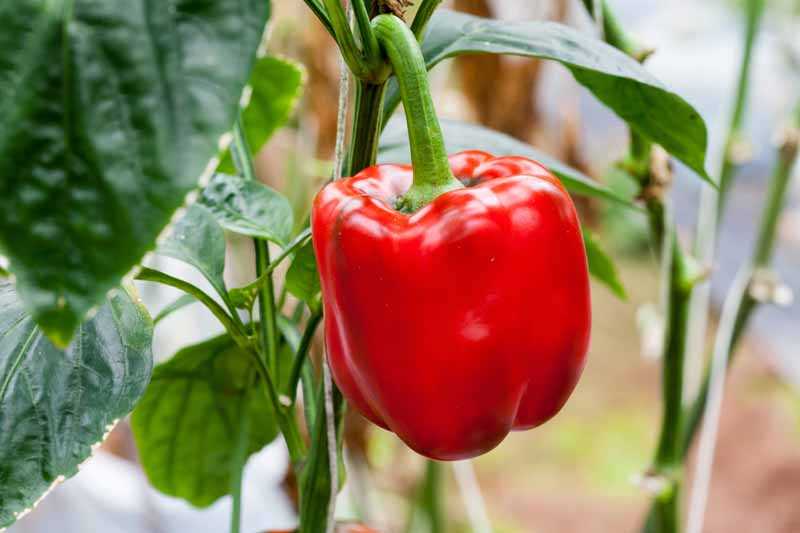
- Introduce beneficial insects, such as ladybugs and lacewings, which feed on common pests.
- Use insecticidal soaps or neem oil to control aphids and other soft-bodied insects.
4. Rotate crops
- Avoid planting bell peppers (and other members of the nightshade family) in the same spot year after year.
- Rotate your crops to prevent the buildup of pests and diseases in the soil.
5. Monitor and treat diseases
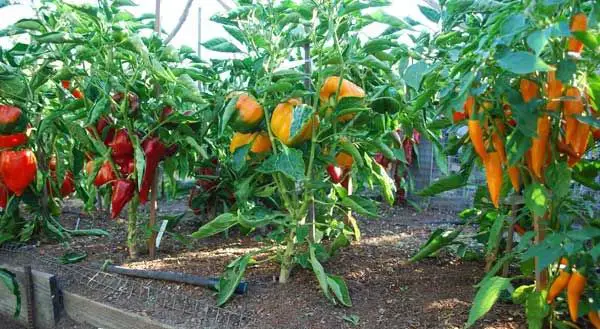
- Common diseases that affect bell peppers include bacterial leaf spot, blossom end rot, and powdery mildew.
- Regularly inspect your plants for any signs of disease and take immediate action.
- Remove infected plants or plant parts to prevent the spread of disease.
- Use fungicides or other appropriate treatments as recommended by local gardening experts.
6. Provide proper spacing
- Avoid overcrowding your bell pepper plants, as this can create a favorable environment for pests and diseases.
- Provide enough space between plants to promote good air circulation.
By following these tips and taking proactive measures, you can protect your bell pepper plants and ensure a healthy and bountiful harvest.
Harvesting and Preparing Bell Pepper Fruits
Harvesting:
- Harvesting bell peppers can be done once they have reached their desired size and have turned the characteristic color for the variety. This is usually when they have turned from green to red, yellow, or orange.
- Gently hold the stem of the pepper and cut it with a sharp pair of garden shears or a knife. Avoid pulling or twisting the pepper, as this can damage the plant.
- It is best to harvest peppers in the morning when the temperature is cooler, to prevent wilting and maintain the best flavor.
Preparing:
- Wash the freshly harvested bell peppers under cold water to remove any dirt or debris.
- Cut off the stem end of the bell pepper and discard.
- Carefully slice the bell pepper open lengthwise and remove the inner core and seeds.
- Depending on your preference, you can now further slice, dice, or julienne the bell pepper to use in various recipes.
Storage:
- Bell peppers can be stored in the refrigerator for up to 1-2 weeks if stored in a plastic bag or airtight container to prevent moisture loss.
- For longer-term storage, bell peppers can be frozen. Simply wash, slice, and remove the seeds, then blanch them in boiling water for a few minutes before transferring them to freezer bags.
Usage:
- Bell peppers can be used in a variety of recipes such as salads, stir-fries, pasta dishes, and stuffed peppers.
- They can be eaten raw, roasted, grilled, or sautéed.
- Bell peppers are rich in vitamins A and C, fiber, and antioxidants, making them a healthy and versatile addition to any meal.
Note: Bell peppers should be handled with care to avoid bruising or damaging the fruit, as this can impact their quality and storage life.
“Question-Answer”
When is the best time to sow bell pepper seedlings?
The best time to sow bell pepper seedlings is in late winter or early spring, about 8 to 10 weeks before the last frost in your area.
Can I sow bell pepper seeds directly in the garden?
While it is possible to sow bell pepper seeds directly in the garden, it is not recommended. Bell peppers require a long growing season, and starting the seedlings indoors gives them a head start.
How should I sow bell pepper seeds indoors?
You can sow bell pepper seeds indoors in seedling trays or pots filled with seed starting mix. Plant the seeds about 1/4 inch deep and water lightly. Cover the containers with plastic wrap or a humidity dome to create a greenhouse-like environment.
What temperature should I maintain for bell pepper seedlings?
For successful germination and growth, you should maintain a temperature of around 70 to 80°F (21 to 27°C) for bell pepper seedlings. Using a heating mat or placing the containers near a heat source can help achieve this temperature.
How often should I water bell pepper seedlings?
You should water bell pepper seedlings regularly, keeping the soil evenly moist but not soggy. Water whenever the top inch of soil feels dry to the touch.
What are some common pests and diseases that affect bell pepper plants?
Some common pests that affect bell pepper plants are aphids, caterpillars, and spider mites. Diseases that can affect them include bacterial spot, blossom end rot, and powdery mildew.







